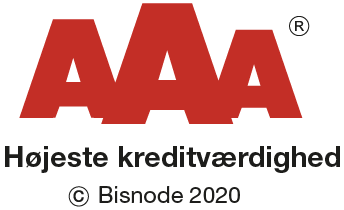
Artikel
The New Marketing Ecosystem – Why We’re Seeing More Hybrid Teams in Large Companies
By: Carsten Bjerregaard, CEO, Marketingcapacity.com
Imagine a marketing team like a modern kitchen garden: Something fixed, something mobile, and something that’s only planted when the season calls for it. That’s exactly what many large companies are doing today. They’re building hybrid teams – a mix of permanent staff, freelancers, agencies, and specialists who can be switched on and off as needed.
But why is this happening? And how do you make it work? Let’s take a look inside the new marketing ecosystem.
Marketing is changing – the permanent team is no longer enough
Something has happened to marketing. It’s not just campaigns and PowerPoints anymore. Today, marketing must be able to deliver results faster, more accurately – and on more channels than ever before.
According to Deloitte’s 2023 CMO Survey, over 70% of marketing leaders plan to change their team structure within the next year. Why? Because the world is moving fast – and permanent teams are struggling to keep up. (Source: Deloitte 2023)
What exactly is a hybrid team?
A hybrid team is not a part-time team. It is a team that combines permanent employees with external forces such as freelancers, consultants and agencies – often managed via a digital platform or model, where you can quickly assign the right skills.
The advantage? You get access to specialist knowledge, flexible capacity and faster time-to-market. The disadvantage? You have to be able to manage it well – otherwise there will be chaos in the kitchen garden.
What is driving the development?
There are four clear reasons why the hybrid model is gaining ground:
- The complexity of marketing is growing. Just look at the tech stack!
- Specialists are hard to hire – and even harder to retain
- Marketing must deliver documentable results – not just awareness
- Campaigns have been replaced by always-on – and that requires flexibility
Gartner showed in their Marketing Org Design Survey (2023) that a full 75% of CMOs will change their structure in order to scale faster. (Source: Gartner)
This is what it looks like in practice
Many large companies are already using the hybrid model – without necessarily calling it that.
A B2B company in the industry may have its permanent brand team in-house, but brings in external specialists for campaigns, web optimization and lead scoring. A large FMCG brand uses agencies for content and paid media, but has project management and strategy in-house.
The model varies – but the point is the same: you combine the best of both worlds.
How to Succeed with a Hybrid Setup
Here are five principles that can make your hybrid team a success:
- Make it clear who does what
- Use common brief templates – it saves time and misunderstandings
- Onboard your externals – it’s also your brand they’re working with
- Think about governance: Who approves what, and when?
- Share knowledge – otherwise people will keep reinventing the wheel
McKinsey specifically points to the need for “modular teams” where you can scale up and down without losing momentum. (Source: McKinsey, The Agile Marketing Organization, 2023)
An ecosystem, not an organizational chart
Marketing in large companies is increasingly being organized as an ecosystem – not a classic pyramid. This requires new skills: the ability to lead across the board, onboard quickly and create psychological safety for both permanent and external forces.
Accenture calls it building a “fluid capability”. We call it common sense. (Source: Accenture, Reinvention in Marketing, 2024)
Conclusion: Hybrid is not a stopgap solution – it’s a strategy
The hybrid model is not just a solution to recruitment problems. It’s a new way of thinking about organization – one that matches the pace and complexity of marketing today.
So the next time you’re considering hiring another permanent specialist: Ask yourself if you need the skill every day – or if it’s something you’ll need to plug in when the need arises.
For marketing leaders in large companies, the ability to orchestrate a hybrid ecosystem is truly the new core competency.
Sources:
- Deloitte – The CMO Survey 2023
→ https://www2.deloitte.com/us/en/insights/focus/cmo-survey.html - McKinsey – The Agile Marketing Organization (2023)
→ https://www.mckinsey.com/business-functions/growth-marketing-and-sales/our-insights/the-agile-marketing-organization - Gartner – Marketing Organizational Design Survey (2023)
→ https://www.gartner.com/en/marketing/insights/marketing-organization - Harvard Business Review – Design your organization to match your strategy (2022)
→ https://hbr.org/2022/06/design-your-organization-to-match-your-strategy - Accenture – Reinvention in Marketing: Building Fluid Capability (2024)
→ https://www.accenture.com/us-en/insights/interactive/marketing-reinvention - Marketing Week – The CMO job description is evolving (2023)
→ https://www.marketingweek.com/cmo-job-description-evolution/








